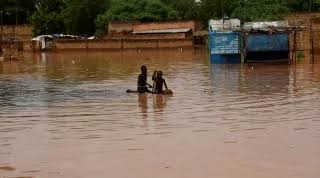
As heavy rains persist across the country, the Nigeria Hydrological Services Agency (NiHSA) has issued a fresh warning that severe flooding is expected to hit 198 local government areas in 31 states and the Federal Capital Territory (FCT) between August 7 and 21, 2025.
This follows a similar alert by the Federal Government on Tuesday, warning of imminent floods in 19 states. The National Flood Early Warning Systems Centre of the Federal Ministry of Environment had urged stakeholders and residents to take immediate precautionary measures.
In its latest advisory, NiHSA classified the flood risk levels as Very High, High, and Moderate, based on local topography and projected rainfall intensity.
States likely to be affected include Adamawa, Akwa Ibom, Anambra, Bauchi, Bayelsa, Benue, Borno, Cross River, Delta, Ebonyi, Edo, FCT, Gombe, Imo, Jigawa, Kaduna, Kebbi, Kogi, Kwara, Lagos, Nasarawa, Niger, Ogun, Ondo, Plateau, Rivers, Sokoto, Taraba, Yobe, and Zamfara.
The agency further disclosed that more than 832 communities are at risk of flooding, with over 100 major transportation routes likely to face disruptions. It also warned of a high risk of displacement, particularly in low-lying and flood-prone areas.
Director General of the agency, Umar Mohammed said: “NiHSA urges residents in affected regions to remain vigilant, adhere to early warning directives, and cooperate with emergency response agencies.
“This alert is issued in line with our commitment to safeguarding lives and property.”
He also appealed to affected states and local governments to rise up to the occasion and safeguard the lives of their people.
“We call on state governments, local authorities, and the public to take proactive measures to mitigate risk and ensure community safety,” Mohammed said.
He assured that the agency will continue to monitor the hydrological situation and provide timely updates as necessary.
He also added that for further information and real-time flood updates, citizens are encouraged to follow NiHSA’s official channels or contact their respective State Emergency Management Agencies, SEMAs.








